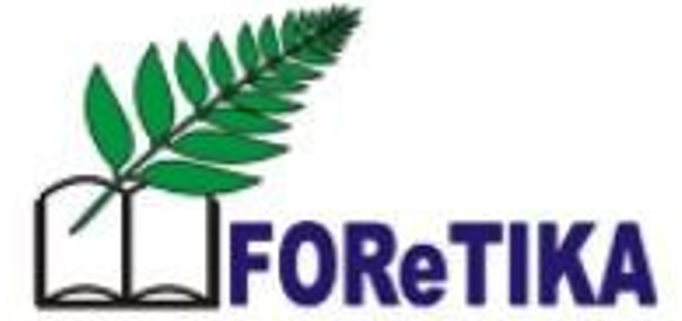DEVELOPMENT OF SILVOFISHERY IN MANGROVE FOREST, BUDENG VILLAGE - JEMBRANA, BALI
DOI:
https://doi.org/10.22219/avicennia.v1i2.5599Keywords:
mangrove, silvofishery, development, JembranAbstract
The transfer of mangrove forest into ponds of the silvofishery system becomes one of the solutions in managing the environmental impact. Many areas that have succeeded in developing and highly relevant are applied in other areas such as the area of ponds located in Budeng Village, Jembrana regency, Bali which began to be abandoned threatening to decrease the quality of the environment. The purpose of this research is to study the development of silvofishery system in Budeng village mangrove area.
The study was conducted during January - February 2017. The method of plotting plot with combination of stripping path was used to obtain the biotic and abiotic environment of mangrove. Data analysis with qualitative descriptive method according to land criteria for silvofishery development.
Biotic and abiotic mangrove environment parameters obtained by pond location in Budeng Village were matched with development table for silvofishery system recommended for silvofishery area. However, it is necessary to stage the addition of mangrove vegetation stand before the silvofishery system is applied because only the vegetation density factor is lacking.
Downloads
References
Aksornkoae, S. 1993. Ecology and Management of Mangrove. IUCN. Bangkok; Thailand
Dahuri, R., Jacob R., Sapta PG., M.J Sitepu. 2001. Pengelolaan Sumber Daya Wilayah Pesisir dan Lautan Secara Terpadu. Penerbit Pradaya Paramita. Jakarta
Damanik, M.M.B., B.E. Hasibuan, Fauzi, Sarifuddin, dan H, Hanum. 2011. Kesuburan Tanah dan Pemupukan. USU-Press, Medan Damanik, M.M.B., B.E. Hasibuan, Fauzi, Sarifuddin, dan H, Hanum. 2011. Kesuburan Tanah dan Pemupukan. USU-Press, Medan
Hardjowigeno, S., 1995. Ilmu Tanah. Akademika Pressindo, Jakarta
Hidayatulah, M. dan Aziz U. 2011. Pertumbuhan Mangrove pada Tambak Silvofishery di Desa Bipolo Kecamatan Sulamu Kabupaten Kupang. Jurnal Penelitian Hutan dan Konservasi Alam, Vol. 10, No.3, 2013
Muhaerin, M. 2008. Kajian Sumberdaya Ekosistem Mangrove untuk Pengelolaan Ekowisata di Estuari Perancak, Jembrana, Bali. [Tesis]. Departemen Manajemen Sumberdaya Perairan Fakultas Perikanan Dan Ilmu Kelautan Institut Pertanian Bogor. Jawa Barat
Padu, S.R. 2014. Kualitas Fisis Kemis dan Biologis Habitat Mangrove di Kelurahan Watumbaka, Kabupaten Sumba Timur, Nusa Tenggara Timur. Skripsi. Fakultas Kehutanan Universitas Gadjah Mada. Yogyakarta
Ramadhan, R.R. 2009. Buku Informasi Mangrove di Taman Nasional Bali Barat. Balai Taman Nasional Bali Barat. Bali
Setiawan, H. 2013. Status Ekologi Hutan Mangrove pada Berbagai Tingkat Ketebalan (Ecological Status of Mangrove Forest at Various Thickness Levels) Jurnal Penelitian Kehutanan Wallacea Vol. 2 No. 2, Juni 2013 : 104 - 120 104
Sualia, I, Eko B.P., dan I N.N. Suryadiputra. 2010. Panduan Pengelolaan Budidaya Tambak Ramah Lingkungan di Daerah Mangrove. Wetlands International Indonesia Programme. Bogor
Subhan, M. 2014. Analisis Tingkat Kerusakan dan Strategi Pengelolaan Mangrove di Kawasan Suaka Perikanan Gili Ranggo Teluk Seriwe Kabupaten Lombok Timur Nusa Tenggara Barat. Tesis. Program Magister, Program Studi Ilmu Lingkungan Program Pascasarjana Universitas Udayana
Sulistyorini, I.S., Poedjirahajoe, E., Edwin, M., Imanuddin. 2017. Potensi Ekosistem Mangrove untuk Pengembangan Silvofishery di Taman Nasional Kutai Kalimantan Timur. Jurnal Agrifor, Vol. XVI, No 3. 209-218
Yamani, A. 2013. Studi Kandungan Karbon pada Hutan Alam Sekunder di Hutan Pendidikan Mandiangin Fakultas Kehutanan Universitas Lambung Mangkurat. Jurnal Hutan Tropis. 1 (1): 6-7
Published
Issue
Section
License
Authors who publish with this journal agree to the following terms:
- Authors retain copyright and grant the journal right of first publication with the work simultaneously licensed under a Creative Commons Attribution License that allows others to share the work with an acknowledgement of the work's authorship and initial publication in this journal.
- Authors are able to enter into separate, additional contractual arrangements for the non-exclusive distribution of the journal's published version of the work (e.g., post it to an institutional repository or publish it in a book), with an acknowledgement of its initial publication in this journal.
- Authors are permitted and encouraged to post their work online (e.g., in institutional repositories or on their website) prior to and during the submission process, as it can lead to productive exchanges, as well as earlier and greater citation of published work (See The Effect of Open Access).











